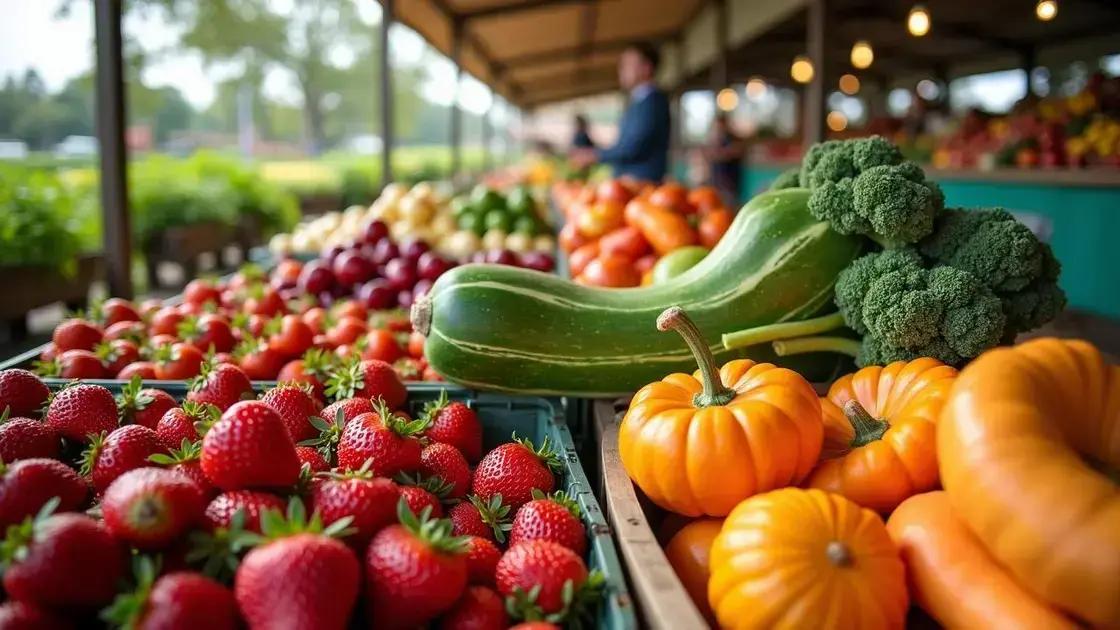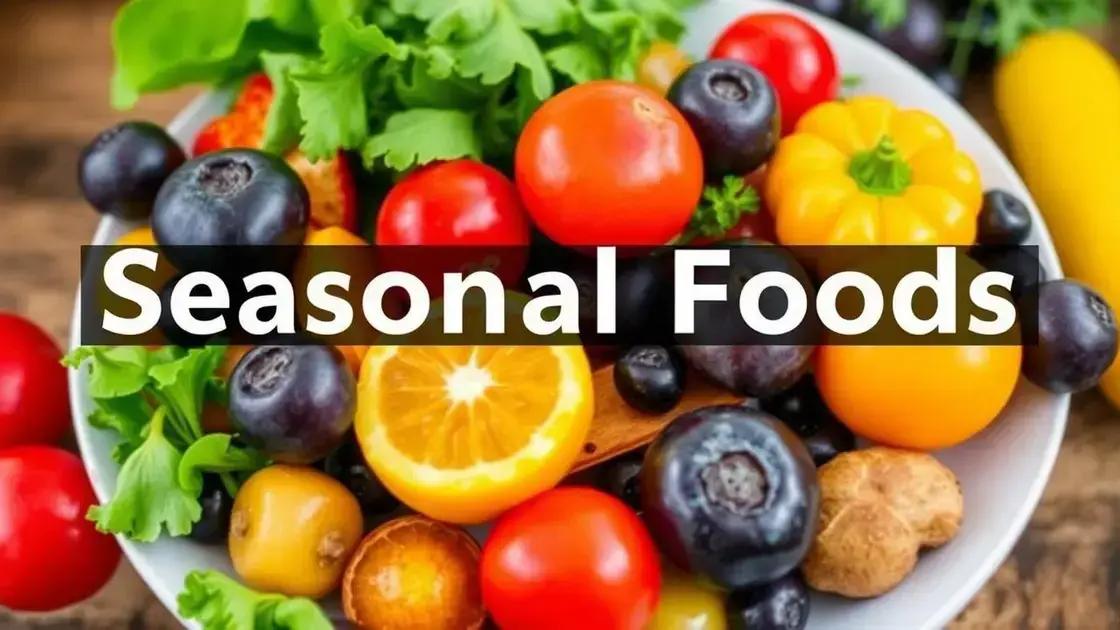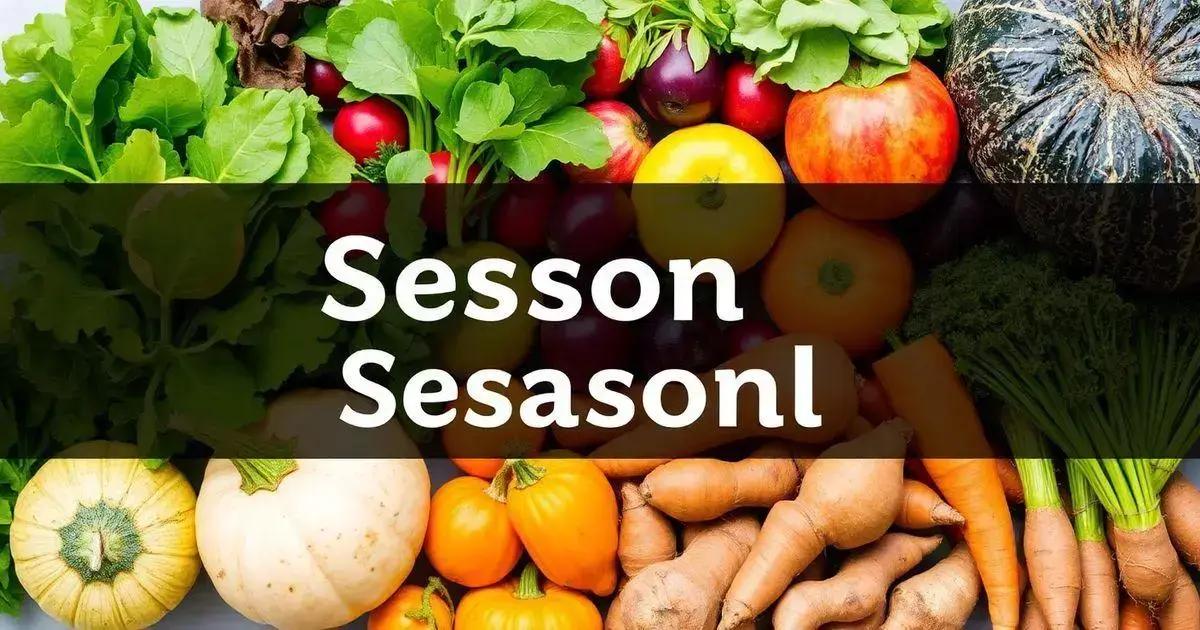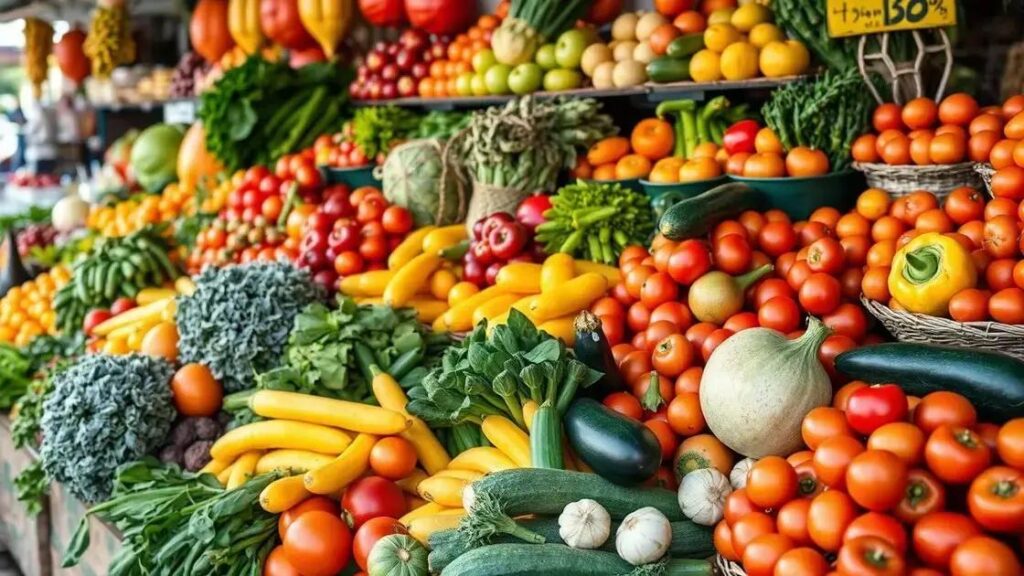The benefits of eating seasonally for better nutrition include fresher flavors, increased nutrient density, support for local farmers, and a reduced carbon footprint. To start eating seasonally, research local harvests, shop at farmers’ markets, join a CSA, plan meals around seasonal ingredients, and consider preserving excess produce for later use.
Eating seasonal foods not only enhances the flavors on your plate but also boosts your nutritional intake. When you consume fruits and vegetables that are in season, they are typically fresher and more nutrient-dense, making them a healthier choice for you and your family. In this article, we will delve into the benefits of eating seasonally for better nutrition, exploring the nutritional advantages that come with this practice, the seasonal ingredients you can enjoy throughout the year, and tips on how to incorporate seasonal eating into your lifestyle.
Understanding Seasonal Eating

Understanding Seasonal Eating is key to improving your overall nutrition and health. Seasonal eating involves consuming fruits, vegetables, and other foods that are harvested during specific times of the year. This practice not only supports local farmers but also ensures that you are eating fresh produce that is at the peak of its flavor and nutritional value.
When you choose seasonal foods, you’re also making a conscious decision to eat in harmony with nature’s cycles. Each season offers a variety of produce that is rich in nutrients necessary for your body’s changing needs. For instance, winter vegetables like kale and brussels sprouts are packed with vitamins that help boost immunity during the cold months.
Why Seasonal Eating Matters
Eating with the seasons can reduce your carbon footprint. When you buy local and seasonal produce, it often requires less transportation, thus decreasing greenhouse gas emissions. Moreover, seasonal fruits and vegetables are generally more affordable. Because these foods are abundant, farmers often sell them at lower prices.
In addition, seasonal eating encourages variety in your diet. By rotating your foods with the seasons, you discover new recipes and flavors. You may also find that eating seasonally keeps your meals exciting and satisfying.
Additionally, seasonal foods are generally fresher and tastier. Freshly harvested produce retains more flavor and nutrients. This means when you bite into an in-season peach or tomato, you’re experiencing a flavor that is superior to its out-of-season counterparts, which are often picked early and shipped long distances.
Nutritional Advantages of Seasonal Foods

The nutritional advantages of seasonal foods are abundant and varied. Eating fruits and vegetables that are in season can provide your body with the vitamins and minerals it craves. Seasonal produce is often harvested at its peak ripeness, meaning it is not only more flavorful but also packed with nutrients compared to out-of-season options.
Vitamins and Nutrients
For instance, summer offers a bounty of juicy berries and tomatoes that are rich in antioxidants. These compounds play a vital role in protecting your cells from damage and may lower the risk of chronic diseases. In autumn, root vegetables like carrots and beets deliver essential vitamins, such as Vitamin A, which supports eye health.
Freshness Equals Nutrition
When you eat foods that are in season, they typically require fewer preservatives and additives, as they don’t need to be shipped long distances. This means you’re more likely to consume whole foods that are naturally rich in nutrients. Fresh produce tends to lose its nutritional value over time, so eating seasonal foods ensures you get the maximum health benefits.
Adapt to Seasonal Needs
Your body’s nutritional needs can change with the seasons. Consuming seasonal foods can help align your diet with these changing needs. For example, during colder months, your body may benefit from the warming properties of hearty vegetables like squash and sweet potatoes, which are rich in fiber and keep you feeling full longer.
Additionally, seasonal foods can enhance your mood and energy levels. Eating vibrant, colorful produce during the summer can help lift your spirits, while warm, comforting meals made with winter produce can provide comfort and satisfaction.
Seasonal Ingredients Around the Year

Seasonal ingredients around the year offer a delightful variety that can enhance your meals and nutritional intake. Each season brings specific fruits, vegetables, and other ingredients that can transform your cooking and eating habits.
Spring
In spring, fresh greens like arugula and spinach emerge. These greens are rich in vitamins and perfect for salads. Additionally, you can find delicate herbs, such as basil and parsley, that add flavor without many calories.
Summer
Summer is a vibrant time for fruits and vegetables. Tomatoes, zucchini, and corn are abundant and bursting with flavor. Juicy berries and peaches are perfect for snacking or desserts. These ingredients shine in fresh salads or grilled dishes, highlighting their natural sweetness.
Fall
As the weather cools, fall introduces hearty ingredients. Pumpkin, squash, and apples become staples. Pumpkins are great for soups and pies, while squash is packed with nutrients and ideal for roasting. Apples are versatile; they can be eaten raw or cooked in various dishes.
winter
In winter, root vegetables like carrots, potatoes, and beets take center stage. They are rich in fiber and suitable for comfort foods. Also, leafy greens like kale and collard greens are available, providing essential vitamins during the colder months.
By cooking with seasonal ingredients, you not only enjoy fresher produce but also contribute to a more sustainable food system. Eating seasonally allows you to experience the unique flavors and benefits of ingredients throughout the year, making your meals both enjoyable and nutritious.
How to Start Eating Seasonally

How to start eating seasonally can be an easy and enjoyable process. With just a few simple steps, you can incorporate more seasonal foods into your diet. Here are some tips to help you get started:
1. Research Local Seasons
2. Visit Farmers’ Markets
Farmers’ markets are excellent places to buy fresh, seasonal produce. You can speak directly with farmers to learn about their growing practices and ask for cooking tips. Plus, you will enjoy the flavors of freshly picked ingredients.
3. Join a Community Supported Agriculture (CSA) Program
Consider joining a CSA program where you can receive a regular supply of seasonal produce. This way, you will discover new ingredients and have the convenience of fresh food delivered to your door.
4. Plan Your Meals
Planning your meals around seasonal ingredients can make cooking more fun. Look for recipes that highlight what’s in season and experiment with new dishes. You may want to try roasting different root vegetables in the fall or making refreshing salads in the summer.
5. Preserve and Store
If you find an abundance of a seasonal ingredient, consider preserving it. You can freeze or can fruits and vegetables to enjoy later in the year. This is a great way to reduce waste and have seasonal flavors all year round.
By following these steps, you can easily start eating more seasonally, improving your nutrition and supporting local agriculture. Enjoy the journey of discovering the delicious foods that each season has to offer!
Embrace Seasonal Eating for Better Nutrition
Eating seasonally offers numerous benefits, improving not only your health but also supporting local farmers and the environment. By understanding the seasonal ingredients available year-round, you can enjoy fresh flavors and higher nutritional value in your meals.
Starting your journey into seasonal eating is simple. Visit farmers’ markets, join a CSA program, and plan meals around what’s currently in season. These practices will enhance your diet and provide a delicious variety that changes throughout the year.
Ultimately, the benefits of eating seasonally extend beyond just nutrition; they connect you to the cycles of nature and community. So, embrace the freshness each season brings and make seasonal eating a joyful part of your life.
FAQ – Frequently Asked Questions about Eating Seasonally
What are the benefits of eating seasonally?
Eating seasonally improves nutrition by providing fresher, more flavorful produce packed with nutrients. It also supports local farmers and reduces environmental impact.
How can I find out which foods are in season?
You can check local harvest calendars online, visit farmers’ markets, or join a Community Supported Agriculture (CSA) program to learn about seasonal foods in your area.
Where can I buy seasonal ingredients?
You can buy seasonal ingredients at farmers’ markets, local produce stands, and grocery stores that prioritize local and seasonal products.
How do I start meal planning with seasonal foods?
Plan your meals by selecting recipes that highlight seasonal produce. Research what ingredients are available each season and incorporate them into your cooking.
Can eating seasonally save me money?
Yes, seasonal produce is often more affordable due to its abundance, and shopping at farmers’ markets can lead to great deals on fresh ingredients.
What if I find a lot of a seasonal ingredient?
If you have an abundance of a seasonal ingredient, consider preserving it by freezing or canning, so you can enjoy it later in the year.













